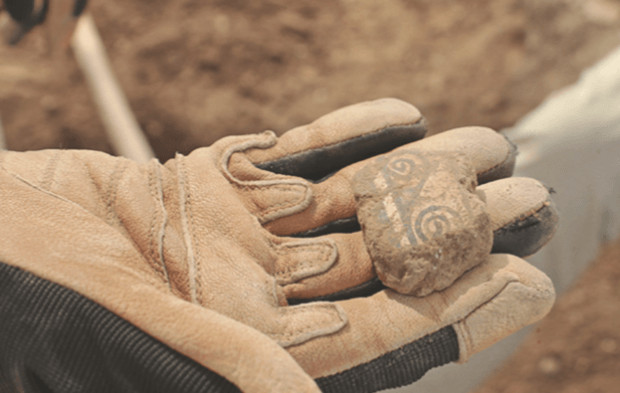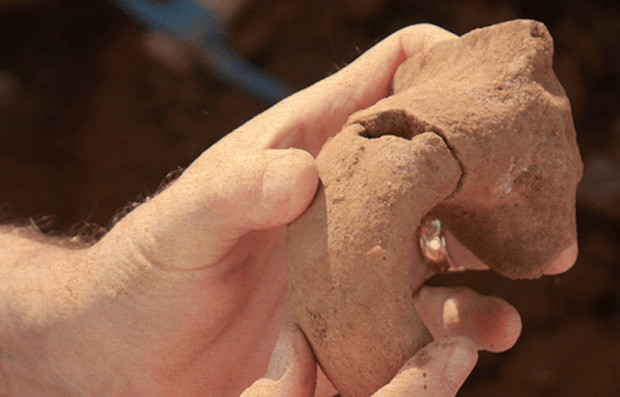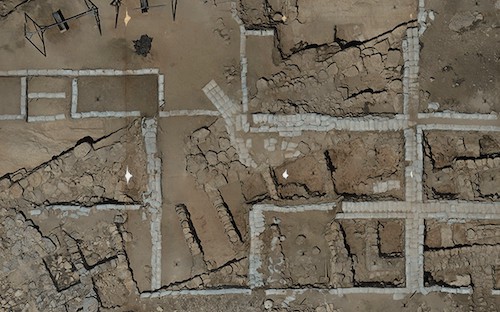Shiloh, an ancient city in Samaria, was the major Israelite place of worship
before the First Temple was built in Jerusalem.
By Scott Stripling
The ruins of ancient Shiloh, first identified by the American explorer Edward Robinson in 1838, lie 18 miles north of Jerusalem at Khirbet Seilun, just west of the modern town of Shiloh and south of ancient Lebonah.
Apart from a possible enigmatic reference in Genesis 49:10, the Bible first mentions Shiloh during the conquest of Canaan (Josh 16:6). After a six-year initial conquest, Joshua has the tabernacle erected at Shiloh (Josh 18:1), in the territory of his own tribe, Ephraim. From here, Joshua allocates territory to the seven tribes who had not yet received their land inheritance.
Most importantly, Shiloh served as the early center of Israelite worship. The original tabernacle rested at Shiloh for over three centuries.1
At some point, a permanent building, or perhaps an ancillary building, likely replaced the tent structure. The Hebrew text supports this view in 1 Samuel, which begins to refer to permanent features such as doors instead of temporary features such as curtains.
This piece of pottery, imported from Cyprus, is dated to the Late Bronze Age II (1400–1177 bc),
when the tabernacle and sacrificial system were operating at Shiloh.
Centuries of occupation
Archaeology has confirmed people were already living at Shiloh when the Israelites arrived around 1399 BC, following the early date of the conquest (1 Kings 6:1; Judges 11:26). Amorites first settled at Shiloh during the Middle Bronze II period, around 1750 BC. The construction of a massive perimeter wall followed in Middle Bronze III, around 1650 BC. However, neither archaeological data nor the biblical text reveals any resistance to the Israelites’ arrival at Shiloh (although future excavation may call for adjusting this view). Since the native residents of the nearby city of Shechem embraced the Israelites (Josh 8:30– 35), perhaps the residents of Shiloh did as well—especially if Shiloh belonged to the Shechem city-state. (The southern city-state of Jerusalem and the northern city-state of Hazor reacted to the Israelites’ arrival with more hostility.)
Shiloh remained occupied until the middle of Iron Age I (around 1070 BC) when it was possibly destroyed by the Philistines (see 1 Sam 4).
Even if the Philistines destroyed Shiloh, the tabernacle itself survived and remained in use in Gibeon during David’s rule (1 Chron 21:29). During Iron Age II (980–587 BC), Israelites rebuilt Shiloh, and it remained occupied through Islamic times. Notably, God instructed seventh-century-BC Israelites to “go now to the place in Shiloh, where I first made a dwelling for my Name, and see what I did to it because of the wickedness of my people Israel” (Jer 7:12). Hundreds of years earlier, the psalmist likewise lamented, “He abandoned the tabernacle of Shiloh, the tent he had set up among humans” (Ps 78:60).
An emerging picture
On and off during the twentieth century, various teams conducted research at Shiloh.2In 2017, the Associates for Biblical Research (ABR), under my direction, launched a new multiyear excavation at the site of Israel’s first capital.
Many Shiloh questions remain unanswered. To date, the location of the city gate from the Bronze and Iron ages remains a mystery, but ABR’s focus on the northwestern sector (Field H1) has exposed a section of the perimeter wall in its first two seasons of excavation. A postern or secondary gate may lie on the site’s north side, but topography makes it likely that the city’s primary entrance was on the south.
The city of Shiloh served as the Israelites’ early center of worship, and the original tabernacle rested there for over three centuries (roughly 1399–1075 BC). This Iron Age I handle dates to that period.
A greater mystery involves the location of the tabernacle at Shiloh. Scholars have proposed three possibilities:
- Following Charles Wilson (1866), some place the tabernacle on the northern platform, outside the perimeter wall.
- Others see the summit as the most logical spot for the sacred shrine, due to its proximity to a bone deposit (see below). The tabernacle would have fit nicely on the summit, despite some claims to the contrary.
- A third view holds that the tabernacle rested on the southern approach, outside the perimeter wall, and near the presumed area of the southern gate. Christians in the Byzantine era in Palestine (AD 325–636) venerated this area, constructing five churches there.
I suggest a fourth view: since the tabernacle was by its very nature mobile, priests may have moved it around Shiloh seasonally, thus making the entire site sacred. My composite view captures the strengths of the other positions and addresses the issues of stench and hygiene that would be problematic if the tabernacle remained in one spot for an extended period.
Area D to the east of the summit yielded a large deposit of burned bones (called a favissa) matching the animals prescribed for sacrifice in Leviticus, mixed with cultic vessels from the Late Bronze Age II (1400–1177 BC). The bone deposit confirms the existence of a sacrificial system at Shiloh. Israeli archaeologist Israel Finkelstein saw this favissa as belonging to pre-Israelite inhabitants, but the bone types and abundant Late Bronze vessels embedded with those bones may well be evidence of the Israelite sacrificial system.
This aerial photo from June 2018 shows white sandbags outlining archaeological squares (originally 5 meters by 5 meters each) excavated by the 2018 Shiloh Excavation Team. Under the sandbags, running from bottom left to upper right, are the remains of a large five-meter-wide wall that surrounded ancient Shiloh. The bottom portion of the photo shows interior rooms attached to the wall.
Joshua and the Israelites inherited an infrastructure at Shiloh that included a massive perimeter wall with a protective glacis (a sloping bank). Storage rooms populated the entire interior perimeter. The pithoi (storage jars) at the lowest levels (ABR strata VII and VIII) date to the pre-Israelite epoch. Just above these layers (in ABR strata VI and V) lie an abundance of pithoi from the Israelite era at Shiloh.
Early in Iron Age I (1177–980 BC) additional storage rooms were constructed on the outside of the wall, perhaps indicating that the Israelites did not yet perceive the Philistines as a threat. No other site in Israel has the same storage configuration. These rooms enabled the efficient storage of the nation’s agricultural tithes. The storage rooms, the bone deposit, a likely four-horned altar found in secondary use, and a ceramic pomegranate (a tabernacle motif ) create a close association between the archaeological data and the biblical text.
While excavations have revealed only a few residential dwellings from the period of the tabernacle, other indicators make it clear that Israelites lived there. Some likely lived in the old Amorite houses (Deut 6:11), while their semi-nomadic brothers continued living in tents (Ps 78:55–67).
About 80 percent of Shiloh remains unexcavated, so critical data awaits the archaeologists’ trowels.
***
To learn more about the geography and archaeology of Israel, we recommend Lexham Geographic Commentaries (5 vols.) and Archaeology in Action: Biblical Archaeology in the Field (3 hour course).
This article originally appeared in the March/April 2019 edition of Bible Study Magazine. The title and header image are additions of an editor.
Scott Stripling is provost and director of the Archaeological Institute at The Bible Seminary in Katy, Texas. He directs the excavations at ancient Shiloh on behalf of the Associates for Biblical Research. A popular author and speaker around the world, he frequently appears in documentaries on archaeology and the Bible.
-
Seder Olam 8 (a Hebrew chronology from the second century AD) mentions 369 years, but the biblical date calculates closer to 305 years.
- A Danish team led by Aege Schmidt sporadically excavated Shiloh from 1926 to 1932 and again in 1963. Israel Finkelstein, on behalf of Bar Ilan University, worked the site from 1981 to 1984. The Civil Administration of Judea and Samaria began sporadic salvage excavations in 1988.








